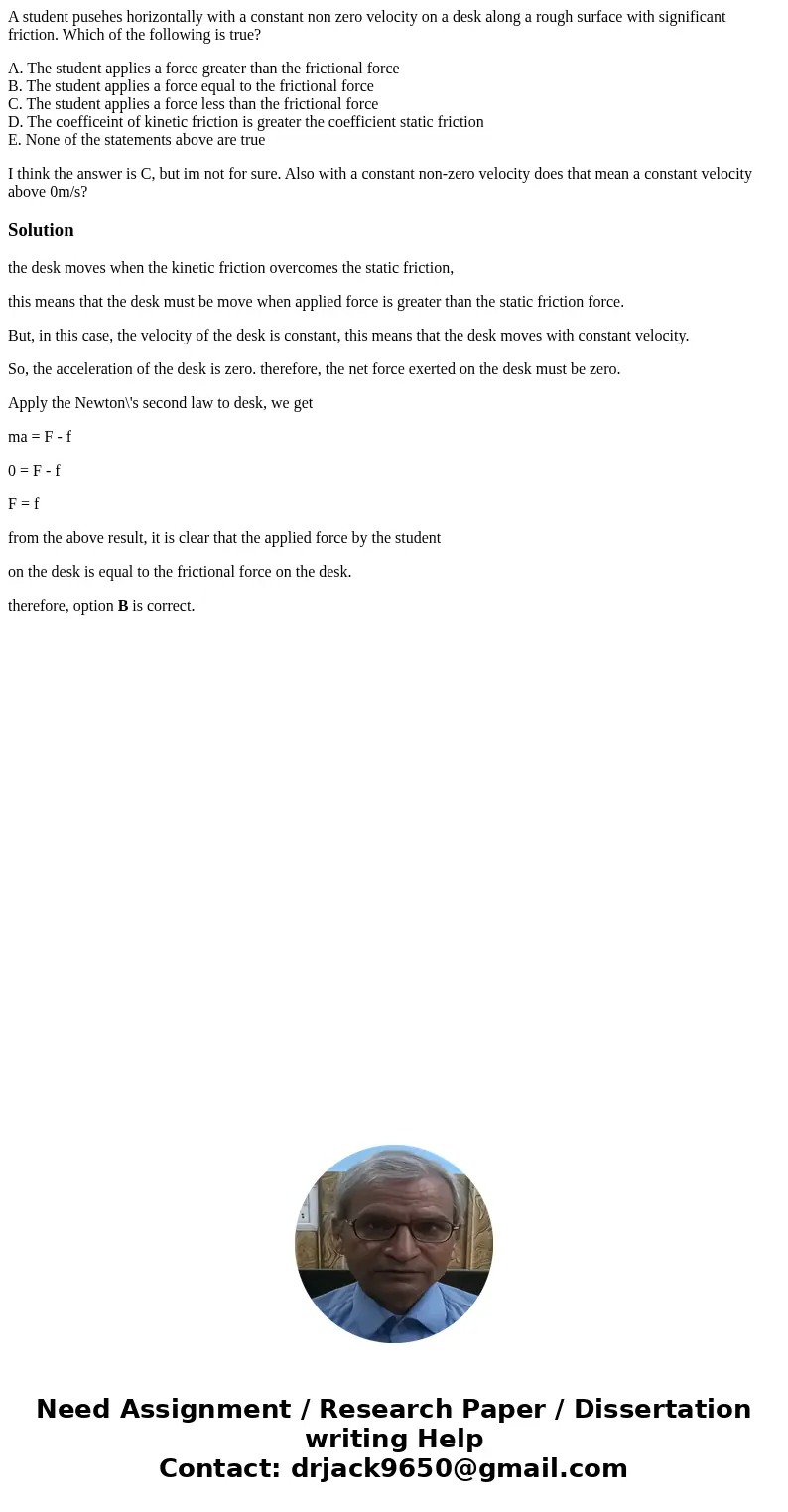A student pusehes horizontally with a constant non zero velo
A student pusehes horizontally with a constant non zero velocity on a desk along a rough surface with significant friction. Which of the following is true?
A. The student applies a force greater than the frictional force
B. The student applies a force equal to the frictional force
C. The student applies a force less than the frictional force
D. The coefficeint of kinetic friction is greater the coefficient static friction
E. None of the statements above are true
I think the answer is C, but im not for sure. Also with a constant non-zero velocity does that mean a constant velocity above 0m/s?
Solution
the desk moves when the kinetic friction overcomes the static friction,
this means that the desk must be move when applied force is greater than the static friction force.
But, in this case, the velocity of the desk is constant, this means that the desk moves with constant velocity.
So, the acceleration of the desk is zero. therefore, the net force exerted on the desk must be zero.
Apply the Newton\'s second law to desk, we get
ma = F - f
0 = F - f
F = f
from the above result, it is clear that the applied force by the student
on the desk is equal to the frictional force on the desk.
therefore, option B is correct.

 Homework Sourse
Homework Sourse